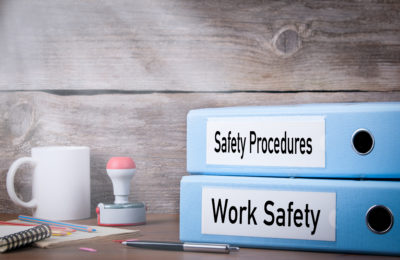
May is Building Safety Month, an excellent time to highlight that safety in the physical work environment is foundational to a good job, company success, and global sustainability. Building and workplace safety in the United States has been evolving since the American Industrial Revolution. Today, laws and policies created by the Occupational Safety and Health Administration (OSHA) help to ensure a safe working environment for employees.
One of the most famous historical workplace tragedies was the Triangle Shirtwaist Factory fire of 1911. A lack of preventative measures, fire safety equipment, and accessible building exits lead to 146 worker deaths in the inferno. Public outrage over the unsafe working conditions revived labor movement efforts toward providing safer environments for women, children, immigrants, and others in large-scale workplaces. Naturally, the principles of structural safety continue to be an important concern today.
Building Safety Codes to Implement in 2022
The International Code Council (ICC) has established four key aspects of building safety to prioritize in 2022. Here’s what they are and why it’s so important for employers to be aware of these building and safety codes.
- Building energy codes for sustainable energy use. In 2021, the ICC launched its Code on a Mission campaign to get more than a third of the US population covered by the new International Energy Conservation Code (IECC) for increased energy efficiency. The code helps governments meet their greenhouse gas goals. It could be incredibly impactful: buildings and building emissions account for 40% of global carbon dioxide emissions. Employers can find tools to help them comply with IECC code here.
- Appreciating professionals in building safety. There is a wide variety of careers available in the building safety field, and each is vital to ensuring that edifices of all types are safe. These professionals are particularly important in regions that are vulnerable to natural disasters, as they can help structures better withstand or pose fewer hazards during a catastrophic event. Is your building up to code? Government and construction employers can learn more about the roles of structural safety officials here.
- Understanding the four phases of emergency management. Employers in all industries should know how to protect employees and company assets during and after a fire or natural disaster. The four phases of emergency management include mitigation, preparedness, response, and recovery. Employers should appoint emergency management teams and train all employees in plans and policies related to emergency situations.
- Clean and safe potable water. Although it may not sound intuitive, building, plumbing, and green codes help protect clean water supply. They achieve this by promoting human and environmental safety through engineering and policies. Codes for water safety can help prevent contamination caused by stormwater runoff, urban runoff (from roofs and pavement), hazardous spills, aging infrastructure, and more. Employers can learn more about potable water and water conservation here.
Also, consider emerging concerns in building safety that impact the health and safety of your workers. We now know that COVID-19 is spread primarily through the air, so be sure that your workplace ventilation system is functioning properly, routinely serviced, and has its filters changed regularly. You may want to consider upgrading to a more powerful system that removes more pathogens from the airflow. The CDC has resources here.
By ensuring compliance with up-to-date building codes and understanding how these form part of a high quality job, employers stand to reap benefits for and from their employees. They can also gain advantages for their companies and the planet as a whole in the following ways:
- Prioritizing employee safety improves overall productivity and profitability for companies and can help to prevent or reduce employee turnover and lawsuits.
- Communicating building safety priorities to employees and providing safety training makes workers feel not only safe, but valued. This enhances employee loyalty, worker retention, and the company reputation and can be an asset in recruiting new employees.
- Promoting energy efficiency and water conservation can significantly reduce a company’s carbon footprint, meaning employers are literally helping to save the planet.
- Making environmental safety and conservation part of a company’s branding and culture goes beyond code compliance: it gives employees a greater sense of purpose and pride in their work. Overtly eco-friendly companies are also more attractive to recruits.
Achieve Improved Structural Safety With the National Fund for Workforce Solutions
The National Fund for Workforce Solutions invests in a dynamic national network of communities tackling critical workforce issues. To achieve our vision of an equitable future with thriving workers, employers, and communities, we partner with employers to make jobs better.
Connecting people to employment is not enough. Workers thrive in good jobs at an organization where they are valued, and this improves recruitment and retention and creates competitive advantage. Having a safe working environment is a core pillar of a quality job.
Read more about how to design better jobs and subscribe to the National Fund email list to stay up to date with the latest in workforce development across the country.



